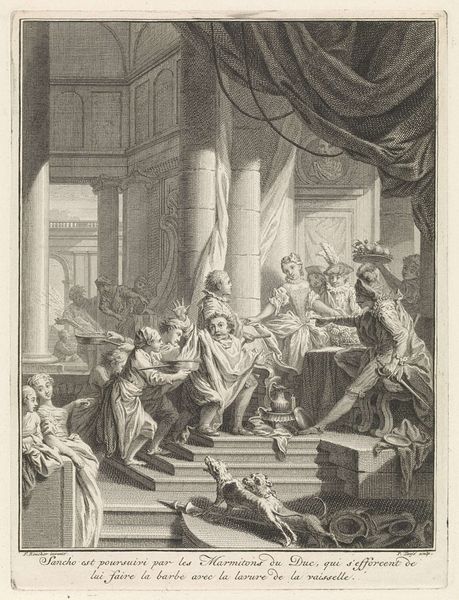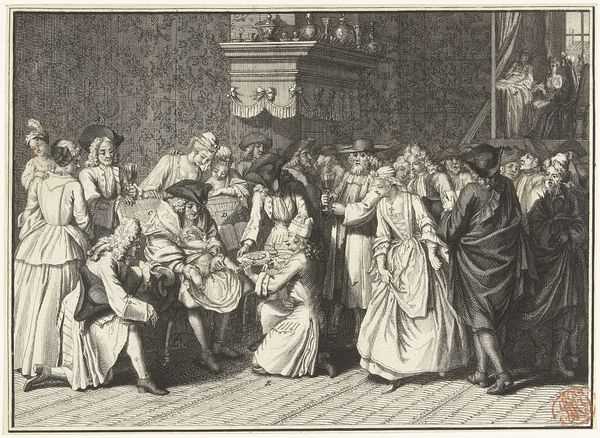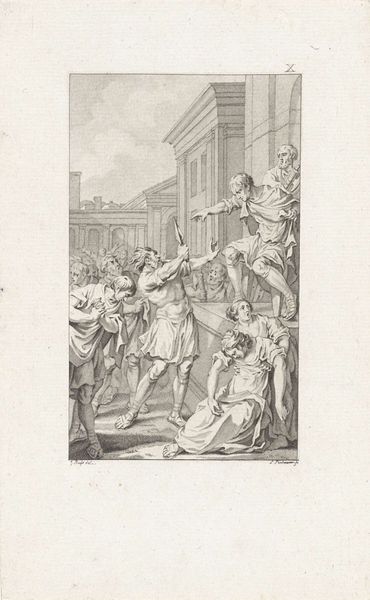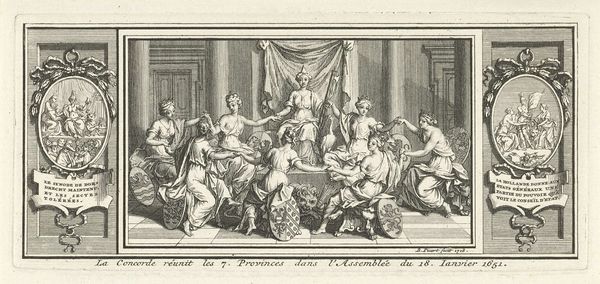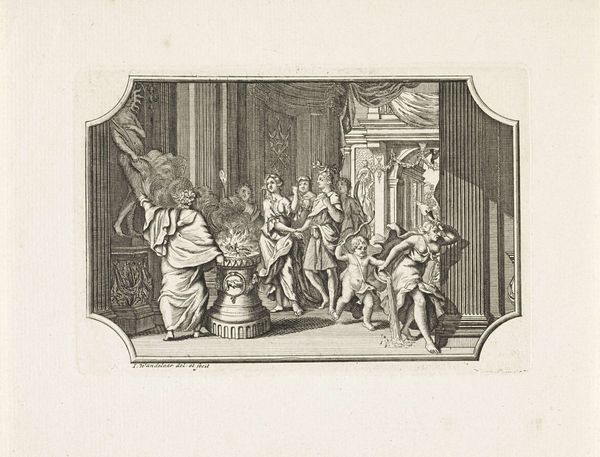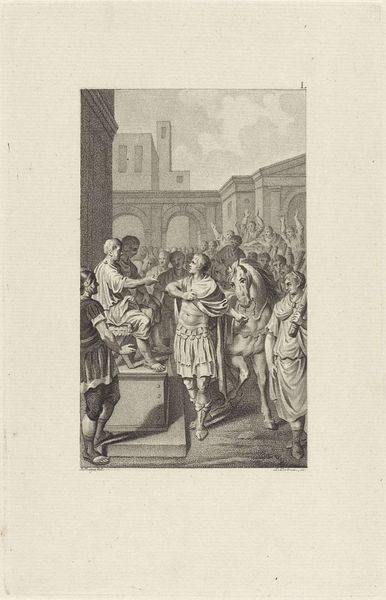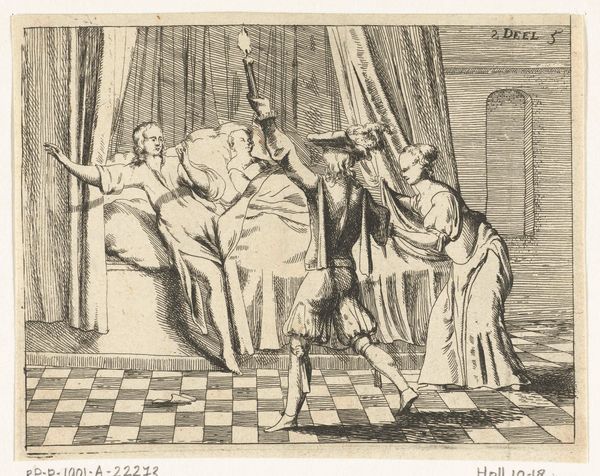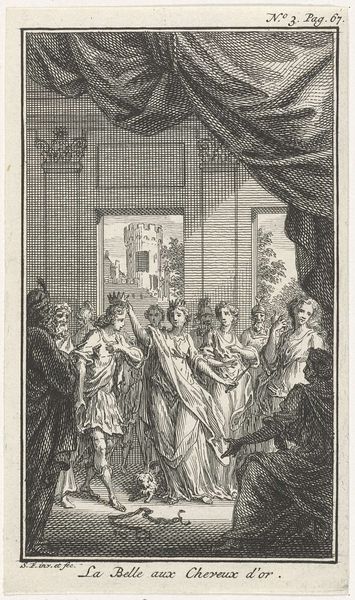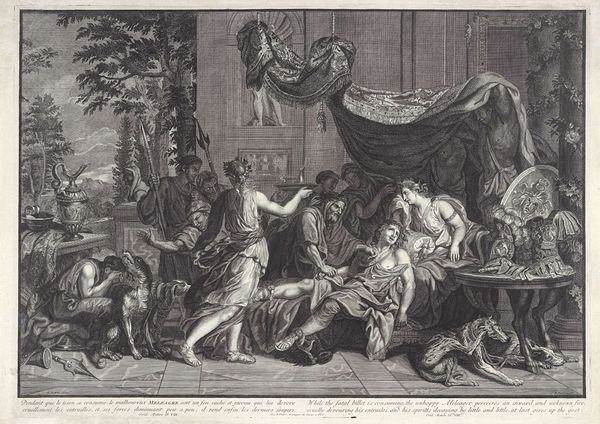
engraving
#
portrait
#
baroque
#
caricature
#
figuration
#
genre-painting
#
history-painting
#
engraving
#
erotic-art
Dimensions: height 211 mm, width 298 mm
Copyright: Rijks Museum: Open Domain
Editor: Here we have "Aanranding van de koningin van Hongarije, 1742," which translates to "The Outrage/Rape of the Queen of Hungary, 1742", by an anonymous artist. It’s an engraving that seems to be filled with satire. What social commentary do you believe the artist is trying to convey through this work? Curator: This piece offers a glimpse into the complex political climate surrounding Maria Theresa's rise to power. This caricature might be seen as a commentary on the predatory power plays by various European rulers vying for control during the War of the Austrian Succession. Consider the ways in which gender and power intersect here; the Queen is quite literally being objectified, with the speech scrolls emerging from each figure reflecting opportunistic desires to manipulate her vulnerability for personal gain. Editor: It feels overtly critical of these rulers, depicting them almost as vultures preying on Maria Theresa. Is that a fair interpretation? Curator: Precisely. The artist uses satire to critique these power dynamics, employing what might today be seen as extremely sexist tropes. Who holds power and how is it used – who is exploiting whom? This imagery highlights how a woman's leadership was, and in many ways still is, contested in political arenas. The choice to depict this as an eroticized violation also contributes to the violence inherent in the political moment. How might contemporary feminist perspectives inform our understanding of this engraving? Editor: Seeing it that way adds another layer, a critique not only of political ambition but also of the inherent misogyny of the time. It is a striking reminder that political commentary has long employed visual tools to underscore power struggles, though I cringe at the overt sexism. Curator: Absolutely, recognizing that cringe, understanding our emotional response and relating it to social theories on women, war, and political rule, brings these old prints into the present. Thinking about that historical context really makes us think critically about today's world, and, in many ways, helps us realize that not as much has changed as we might have hoped.
Comments
No comments
Be the first to comment and join the conversation on the ultimate creative platform.

